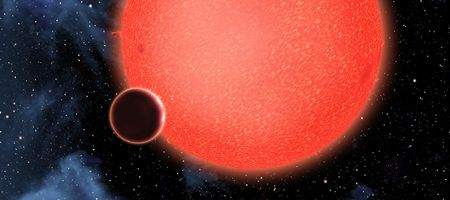Astronomers using the Hubble Space Telescope have identified a new type of planet – a waterworld surrounded by a thick, steamy atmosphere.

“GJ 1214b is like no planet we know of,” says Zachory Berta of the Harvard-Smithsonian Center for Astrophysics (CfA). “A huge fraction of its mass is made up of water.”
Originally discovered in 2009, GJ 1214b is around 2.7 times the diameter of the earth, and weighs seven times as much. It orbits a red dwarf star, and has a temperature of 230 degrees Celcius. But until now, its composition wasn’t known.
The team used Hubble’s Wide Field Camera 3 to study GJ 1214b as it crossed in front of its host star and analyze the star’s light as it filtered through the planet’s atmosphere.
And they found the spectrum of GJ 1214b to be featureless over a wide range of wavelengths, indicating a dense atmosphere of water vapour.
“The Hubble measurements really tip the balance in favour of a steamy atmosphere,” says Berta.
Data on the planet’s mass and size give a density of only about two grams per cubic centimetre – less than half that of Earth. With water’sdensity just one gram per cubic centimetre, the implication is that GJ 1214b has much more water than Earth does, and less rock.
As a result, the internal structure of GJ 1214b must be extraordinarily different from that of our world, says Berta.
“The high temperatures and high pressures would form exotic materials like ‘hot ice’ or ‘superfluid water’, substances that are completely alien to our everyday experience,” he says.
GJ 1214b probably formed further out from its star, where water ice was plentiful, and migrated inward early in the system’s history.
In the process, it would have passed through the star’s habitable zone, where surface temperatures would be similar to Earth’s – tantalisingly raising the possibility that it once harbored life.
GJ 1214b is located in the constellation of Ophiuchus, and is just 40 light-years from Earth. Therefore, says Berta, it’s a prime candidate for study by the James Webb Space Telescope, planned for launch later this decade.






